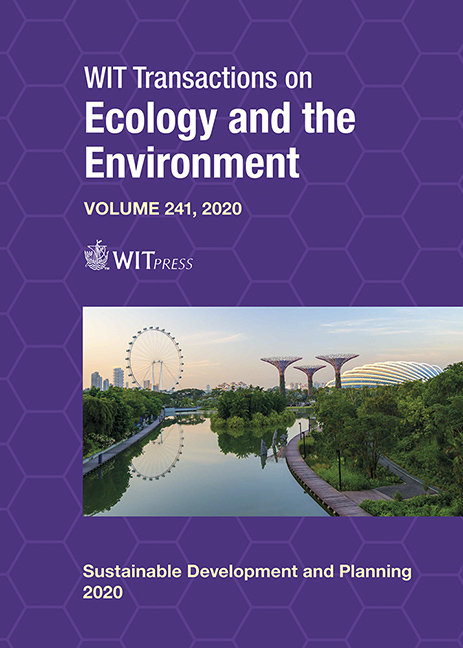GREEN INFRASTRUCTURE BENEFITS TO VALUE AND ENHANCE THE BUILT ENVIRONMENT: THE CASE OF ADDIS ABABA, ETHIOPIA
Price
Free (open access)
Transaction
Volume
241
Pages
14
Page Range
355 - 368
Published
2020
Paper DOI
10.2495/SDP200291
Copyright
WIT Press
Author(s)
SAMUEL MOSISSA, ZHONGWEI SHEN, GASHAW ASEFA, AMANUEL WOLDESEMBET
Abstract
Green infrastructure (GI), as a term, is subject to a wide range of definitions and functions. As a core identity, it holds connectivity and multifunctionality. GI supports the ecological, social, and economic roles of urban areas by linking different infrastructural developments with nature. Thus, the first objective of this article is to explore green infrastructure definitions, benefits, and assets. And then to assign a category of multifunctionality. What green infrastructure benefits do the individual assets deliver? The second is to evaluate the green infrastructure assets benefits in the case of Addis Ababa and determine the estimated GI value difference. The estimated GI value difference is the percentage gap between the current benefit of GI assets and the possible benefits GI assets could give. It is determined through expert opinion methodology; experts selected from academic department lists, who, one way or another, study about the city GI issues. The scope of the study mainly focuses on the central and southeast parts of the city. Besides the expert opinions, in order to assess the current situations and the strategies that are currently employed by Addis Ababa city government, the paper uses site surveys, maps and secondary data from the city administration. The result of the study shows that, even though the city of Addis Ababa is losing green coverage rapidly, the new projects in hand are encouraging. The GI value difference result indicates a considerable gap between the possible benefits GI assets could give and the current benefits they are offering. Thus, the paper suggests Addis Ababa municipality needs to integrate new green infrastructure strategies and strengthen the employed GI strategies to increase the category of multifunctionality.
Keywords
green infrastructure (GI), multifunctionality, GI assets, GI benefits, GI value





